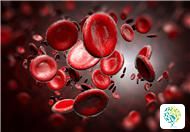Elevated red blood cells usually occur in two scenarios: one is relative increase, and the other is secondary increase.

Relative increase is usually caused by a decrease in blood volume and an increase in blood concentration, commonly seen in extensive burns, excessive sweating, diarrhea, etc. Secondary increase is generally caused by circulatory disorders and tissue hypoxia, which can be further divided into pathological and physiological increases.
1. Relative Increase
Relative increases in red blood cells are commonly seen in conditions such as continuous severe vomiting, extensive burns, severe diarrhea, and excessive sweating. They can also be seen in chronic adrenal cortical insufficiency, diabetes insipidus, and hyperthyroidism. These conditions usually result from a lack of water in the blood, leading to an increase in blood concentration and a relative increase in red blood cells.
2. Secondary Increase
2.1 Physiological Increase
Insufficient oxygen content in the environment or special reasons can lead to hypoxia in the body tissues, causing an increase in red blood cells. This is commonly seen in fetuses, newborns, and people who are constantly exposed to environments with insufficient oxygen content, such as high altitude areas. Drinking too little water or excessive sweating can also lead to elevated red blood cells.
2.2 Pathological Increase
Pathological increases are generally caused by insufficient lung ventilation, which puts the body in a hypoxic state and causes an increase in red blood cells. These are commonly seen in lung diseases such as bronchiectasis, pulmonary heart disease, obesity, pulmonary arteriovenous fistula, cyanotic congenital heart disease, and abnormal hemoglobin diseases.

